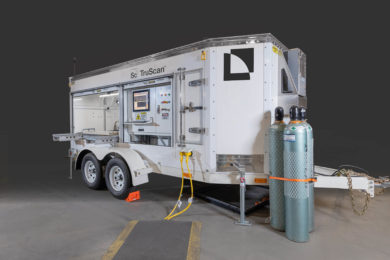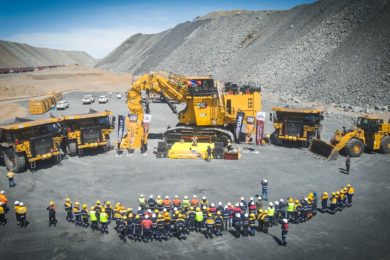 Sandvik Mining, whose parent company spent ZAR3.5 billion in research and development in the 2011 financial year, has been undertaking intensive research in partnership with RAG-Deutsche Steinkohle, Germany’s largest coal mining company, aimed at improving automation processes of face mining machines using the Sandvik MR620 roadheader as the coal face model. Sandvik has compiled a report on the progress of the research with the focus on profile definition and the automatic cutting cycle.
Sandvik Mining, whose parent company spent ZAR3.5 billion in research and development in the 2011 financial year, has been undertaking intensive research in partnership with RAG-Deutsche Steinkohle, Germany’s largest coal mining company, aimed at improving automation processes of face mining machines using the Sandvik MR620 roadheader as the coal face model. Sandvik has compiled a report on the progress of the research with the focus on profile definition and the automatic cutting cycle.
“The challenges lies in the fact that the mining system has to fulfil a lot of different features, like cutting, loading, roof supporting, following the coal seam and keeping communication to many other underground components,” the researchers indicate. “A lot of information and many degrees of freedom have to be managed at the same time. The aim for the performance of the new automated system is to reach the operational cutting performance of an average machine operator, but to deliver stable performance without significantly overloading of the system. This results in smoother machine loading and consequently in higher system reliability, less downtime and reduced operational costs as well as more comfort for the underground team.”
Addressing the issue of machine positioning and recognition of coal seam, the researchers state a different and simplified algorithm needs to be developed to fulfil the requirements of machine navigation with the following features:
- The machine has to be positioned in front of the face just roughly by the machine operator
- With a laser scanning process the position of the coal seam in front of the machine is measured and evaluated
- Afterwards a target plate on the boom needs to be positioned into the laser beam in order to get accurate machine position information
- With all this measurement information the horizontal and vertical translation as well as rotation of the profile is evaluated by the software automatically
- All the profile positioning parameters are set as default values by the control system, but they have to be approved and might be changed by the operator by real time visualisation. Now all the necessary data should be available in order to cut the face in front of the machine
“Besides the location and orientation of the profile to be cut, the shape of the profile itself might be changed by the operator due to several different reasons. All these parameters are set and modified by the operator. By means of an online visualisation he can check their consequences in comparison with a reference profile,” the researchers say. “The most important parameters are shape of initial profile, general overcut, additional parameters, especially for steel arch profiles, additional features such as the ability to check if profile is inside the reachable section or need to reduce cross section because of instable face conditions. The strategy behind cutting automation is to feed the PLC with cutting paths which are automatically processed. In order to overcome the limitations of the generation systems, especially regarding the flexibility of the automation solution, on the ITSM the cut paths are planned online by an algorithm. There now is almost no limitation on the number influencing factors to be taken into account.” The report indicates that when analysing typical cutting operations on a road header with a transversal cutter head one can discern several different operation modes generally classified as sump-in, cutting upwards, cutting downwards and loading, and profiling.









